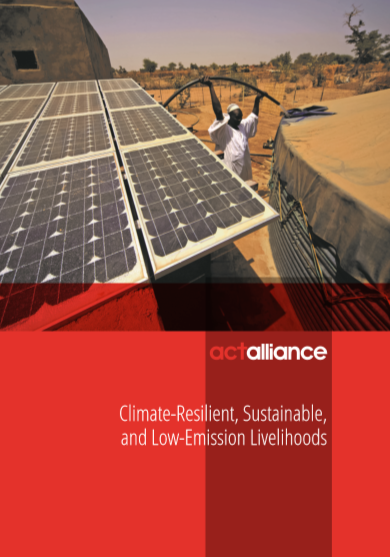Climate-Resilient, Sustainable, and Low-Emission Livelihoods

In responding to the threat of climate change, the 2015 Paris Agreement outlines not only targets, but pathways. Article 2, for instance, focuses on the need to foster climate resilience and low greenhouse gas development. Article 7 also emphasizes the value of strengthening resilience as well as enabling the resilience of socio-economic and ecological systems. Article 8 specifies the need to focus on resilience of communities, livelihoods, and ecosystems. The Intergovernmental Panel on Climate Change (IPCC) Fifth Assessment Report provided the scientific inputs to the Paris Agreement and highlighted various actions, including mitigation; addressing risks, especially vulnerability and exposure; climate resilience; transformation; adaptation-mitigation co-benefits; and governance.
The IPCC’s 2018 Special Report “Global Warming of 1.5°C” reminds stakeholders that climate-related risks to multiple sectors, including livelihoods, are projected to increase with global warming of 1.5°C and will further intensify with a global warming increase of 2°C. In certain areas, there will be irreversible loss of the most fragile ecosystems, which will relegate the most disadvantaged and vulnerable populations engaged in agricultural and coastal livelihoods to crisis upon crisis1. The report underscores that recent trends in global emissions and actual commitments shown through Nationally Determined Contributions of countries within the Paris Agreement fall short of what is needed to create a decline in global warming. If the trend is not reversed, even adaptation efforts at 1.5°C will prove to be difficult and even more arduous if warming of 2°C is reached. There is an urgent need for increased and more ambitious mitigation.
In a period of climate emergency, a more efficient means to secure survival and sustainable development is to find co-beneficial means to address climate-related issues with efficiency. Efficiency is needed because of the deep concern of the impact of the fast-evolving climate hazards on peoples, ecosystems, assets, and overall development. In the past, adaptation options have resulted in trade-offs or maladaptations that had adverse impacts, such as increasing greenhouse gas emissions, increasing gender and social inequality, undermining health conditions, and encroaching on natural ecosystems. Mitigation efforts may also create trade-offs with adaptation objectives, such as when priorities over bioenergy crops and forest regeneration compete with land needs for agricultural adaptation. This may undermine food security, livelihoods, and ecosystem functions and services. The IPCC points out that synergies between other approaches to address climate issues, adaptation, mitigation, attention to poverty, and Sustainable Development Goals urgently need to be developed.2
Livelihoods are one of the most at-risk dimensions to climate change. Their role in the survivability and sustainability of peoples and ecosystems cannot be understated. Livelihoods depend on the diversity, health, and productivity of ecosystems and humans. The survival of many of the most vulnerable and poorest communities largely depends on the simple extraction of raw forest or coastal resources. The Food and Agriculture Organization (FAO) of the United Nations (UN) underscores that two-thirds of the world’s
- Publisher: ACT Alliance

